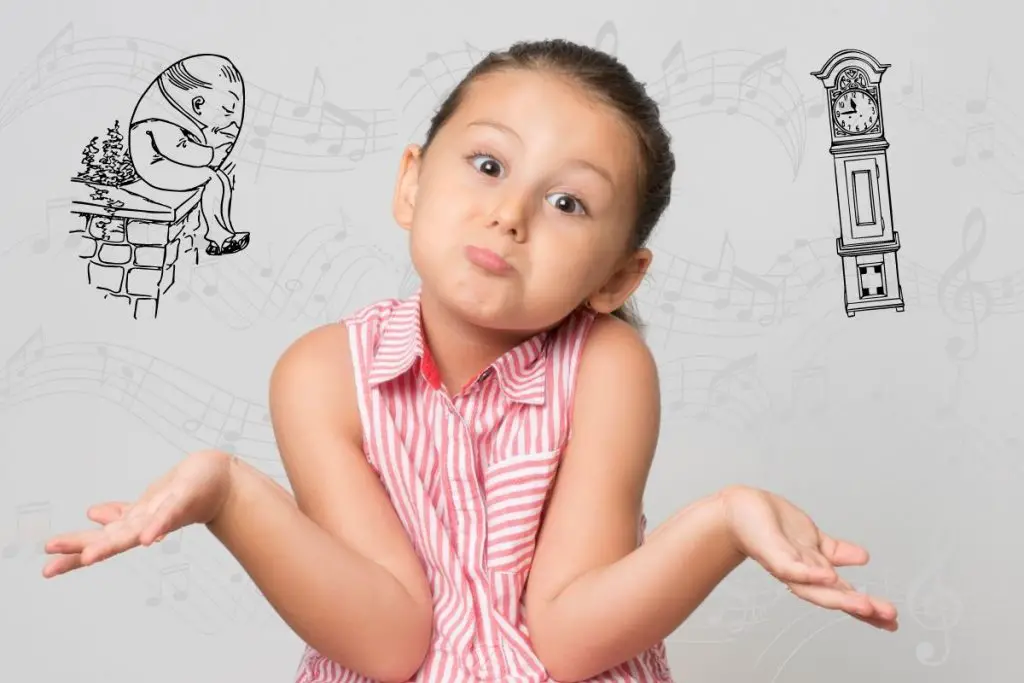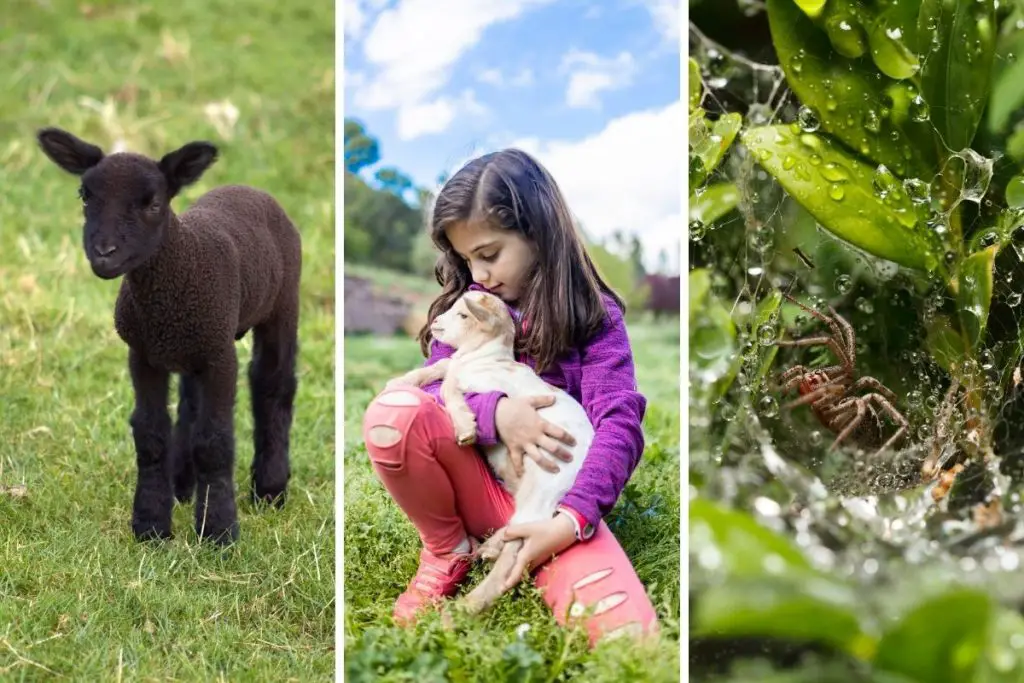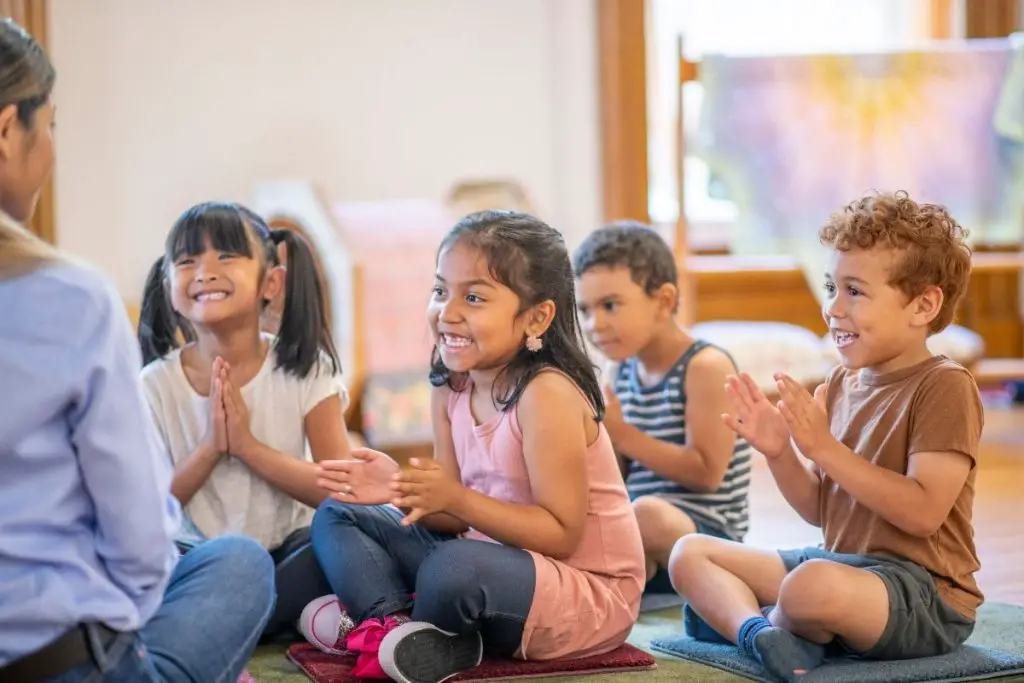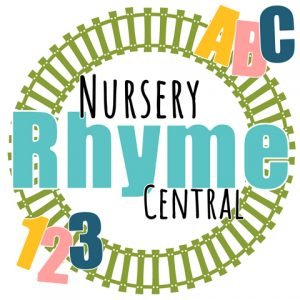A, B, C, D, E, F, G, How I wonder what you are! What???? These two well know nursery rhymes Twinkle Twinkle and the Alphabet song share the same tune, as does Baa Baa Black sheep. But why? And what other nursery rhymes share similar melodies or have the same tune?
Nursery rhymes often share similar tunes to aid with memory development, as repetition across nursery rhymes develops recollection and helps children to learn words. Singing the same tune with different lyrics encourages children to sing along with has many benefits, including language and social development.

There are many reasons why nursery rhymes often share the same or similar melodies, and there have been numerous studies on how this principle aids with child development. Everything from developing musical affinity, language skills and social development are reasons why nursery rhymes share tunes. Let us take a better look at some of the reasons why nursery rhymes often sound similar and which ones share the same tune.
Why Do So Many Nursery Rhymes Have Similar Tunes?
Out of the thousands of nursery rhymes all over the world, there are so many of them that share a very similar or the exact same tune. This is true across languages, countries, and cultures, as the same melodies are reused for nursery rhymes and children’s songs for specific purposes.
There are many reasons why this tactic is used when writing or adapting nursery rhymes, and all are aimed at aiding children with specific skills such as recollection, memory, language, social skills, and musical development.
1. Nursery Rhymes come from the oral tradition.
Nursery rhymes were originally passed on orally – never written down or recorded because these forms of technolodgy were not available. Nursery rhymes used the melodies of the classical or folk music of the day and transformed them into melodies that were simpler and appealed to young children. They come from a time when musical styles were limited and people did not own a device to playback music and only heard music played or sung live. Therefore the same tunes and melodies were passed on over and over again with words and lyrics being adapted over time.
2. Many Nursery Rhymes Are Written In The Same Key
Nursery rhymes are written for children which means that the songs are written in a very simple way that is easy for children to sing along to. This style of music is most easily executed by using the most simple key to write music in, which is the key of C Major.
The fact that most nursery rhymes are written in the key of C Major makes the majority of them sound familiar, even if they do not share the same tune. The use of this specific key for so many songs means that it is highly possible that many songs were written with similar tunes unintentionally, simply because there are only a limited number of ways that a simple melody can be written in one musical key.
3. Melodic Association
Melodic association is simply associating a specific style of music to a specific activity, idea, memory, person, or place. Just as heavy metal or classical music has a certain melodic style, so do nursery rhymes. When adults start singing to children they do this in a certain way or style that we have all come to understand is most conducive to retaining a child’s attention. Over years and years of singing to children as a society, we have worked out that kids like certain melodies over others and therefore tend to use these when we create and recite nursery rhymes and songs for children.
Added to this is the fact that when nursery rhymes make use of the same melody across multiple songs, the common melody helps children to associate that melody with the act of interacting, learning, singing, as well as with behavior and fun. When a familiar melody is heard, a child will know what to do. They realize that it is now time to sing along, or join hands, or keep quiet and listen to instructions.
Melodic association can be a very useful tool in helping children to progress in specific activities or social interactions, especially those who struggle with their behavior.
4. Use of Rhyming words

Nursery rhymes use pairs of rhyming words, which generally follow a pattern where the first rhyming words appears at the end of each phrase or sentence and the next at the end of every second phrase. This pattern can make nursery rhymes appear to be similar to others especially when not sung to a specific tune but rather spoken to a beat. Try to speak rather than sing the following to see what we mean:
| Baa Baa Black sheep, have you any wool? Yes sir, yes sir, three bags full. | Mary had a little lamb, it’s fleece was white as snow. And everywhere that Mary went, the lamb was sure to go. | Incey, wincey, spider climbed up the water spout. Down came the rain, and washed pour Incey out. |
Rhyming is a great way for children to start to become phonologically aware, or aware that words have sounds in them and that some words sound similar and others do not. This awareness is sometimes the first steps in a child’s pre-literacy journey towards reading!
5. Structure and Repetition
The melodies and tunes of nursery rhymes sometimes sound similar as they use similar structures and rhythms. They follow patterns such as having verses and chorus similar to songs, or they follow a rhythm or beat or as we just wrote about they have rhyming words. Some repeat the same verse with a simple change such as in Old Macdonald Had a Farm where each verse is repeated except the animal and animal sound is changed, or The Wheels on the Bus where each verse is repeated, but the action is changed.
Repetition such as this helps children to develop many skills, and using the same repeated melody over multiple songs helps children to identify and remember specific words and sounds. This drastically increases language development and helps children to learn the correct pronunciation and context of words in a language. Repetition is vital for learning, and repeating a familiar tune in multiple songs is a great way to kick-start necessary language and auditory skills, as well as teaching children to intentionally remember words, sounds, and syllables.
6. To Help Learn New Words
You will often see lyrics that state – is sung to the melody of a familiar rhyme. These lyrics and rhymes over time become associated with each other and therefore are known to have the same melody and tune as the well known nursery rhyme.
We do this because as adults we usually know the tune and can easily sing the lyrics to the child. But it is also done because nursery rhymes that use similar tunes make it possible for children to learn new words and phrases quickly and easily by introducing the new words in a very familiar way. This helps not only with learning the words but also learning how to use them in context.
To put it simply, the child singing a nursery rhyme that has the same tune as a song that they already know allows them to focus on learning the new words and phrases of the song without having to learn a new melody as well. This method makes it easier and more enjoyable for a child to learn new words, which makes it far easier for them to remember the new words, accelerating their grasp of words, pronunciation, and sentence structure.
7. For Memory and Reciting
In our first point, we wrote that nursery rhymes were never written down or published and were passed on in the oral tradition – sung from one person to the next, from mother to child, to their children etc… Therefore
Nursery rhymes that have similar or the same tune are easy to remember both for the adults and children singing them. Along with the structure & repetition of singing the same melodies over multiple songs, the use of the same tune helps children of varying developmental stages to easily remember new words and phrases, as well as helps them to understand the words that they are using.
The melody of the nursery rhyme becomes a type of mnemonic device that helps the child to remember the song and the words in the song, a well as the context of the words that are being used. This teaches children valuable skills and helps to build neural pathways associated with memory and recollection. The familiar melodies used in the songs are a great way to facilitate learning these skills.
8. Sing Along Style

A very important reason why nursery rhymes use the same tunes is to help children learn them quickly while keeping the song familiar. This familiarity encourages children to sing along with the song.
Singing with a group is important for social development and is an excellent group socialization tool. There is something about all singing together that helps to unify friendships and break social barriers, not only among children.
When singing along with nursery rhymes, a child will learn to interact with others, take cues from a person of authority, develop rhythm and timing, as well as learn to enunciate and project their voices to speak clearly. These are all important social skills that singing nursery rhymes encourage.
9. To Help Develop a Love for Music
Developing an affinity for music at a young age helps to develop all forms of brain function as can be seen on brain scans of muscians and people playing music where multiple areas of the brain light up and are working. Therefore music can be a very important aspect of a child’s educational development, and when adults find a tune or melody that kids seem to love they tend to try and stick with it because it works.
Teaching kids simple songs that they can easily understand, remember, and repeat gives them a good foundation for other important skills to be developed through music.
Children who are taught to comprehend music use their brains in optimized ways for learning compared to children with no exposure to music, and so nursery rhymes are an easy introduction to the world of musical melody and harmony that is of great importance in further educational stages.
Is Using Similars Tunes & Melodies For Nursery Rhymes Important?
‘Children relish in listening to songs full of rhyming, rhythm, and repetition. By singing songs containing these core elements it is helping boost children’s language, communications, and literacy development.’ (Kelly – earlyyearscareers.com)
The practice of repeating the same melody or tune over multiple nursery rhymes seems to be important because these are the melodies that most capture children’s attention and imaginations. They are like one-hit wonders – those songs that everyone loves and stay at the top of the charts because their rhythm and melody are so appealing and easy to listen to or sing along with.
New rhymes, melodies, and rhythms come along, but not very often, and when they do they need to be heard by the masses to really be considered part of the nursery rhyme genre as a whole. Songs by The Wiggles such as ‘Everybody Clap‘ or ‘Hot Potato‘ come to mind or even ‘Baby Shark‘ by Pink Fong, but will these tunes and melodies stand the test of time like Mary Had a Little Lamb for instance has?
Nursery Rhymes That Sound the Same and have the same tune:
There are many different examples of nursery rhymes, lullabies, songs, and poems that make use of the same tune, while the lyrics or words are completely different.
These melodies can be repeated throughout the entire piece, or they can be part of the greater piece as a whole, with different melodies or variations of the original melody surrounding them common melody. Every society and culture has these types of songs that use the same tunes, but there are some widely known international examples that we can compare very easily.
| Songs with the Same Tune or Melody | |
|---|---|
| The Alphabet Song (ABCD) Twinkle Twinkle Little Star Baa Baa Black Sheep | Baa Baa Black Sheep does not use the exact same melody throughout, but Twinkle Twinkle Little Star and The Alphabet Song use the exact same melody for the entire song. All of these songs are written in the same key, and they use predominantly the same notes in the melodic progression. |
| Frere Jacques Where is Thumbkin Thank You Father Two Tigers (Chinese Folk Song) I hear Thunder | A song like Thank You Father is specifically written to the tune of a pre-existing song such as Frere Jaque for the sake of keeping the song simple and memorable, which makes it easy for children to repeat and sing together. |
| Three Blind Mice Hot Cross Buns | Examples such as Hot Cross Buns and Three Blind Mice just so happen to use portions of the same melody. |
| Mary had a Little Lamb London Bridge is falling down | Sing them – they have the exact same tune! |
| Merrily we roll along This is how we wash our hands | This is how we wash our hands is a newer rhyme that has been created more recently to the tune of Merrily we roll along to help teach kids to wash their hands. |
| Ring-a-ring a Rosie Oranges and Lemons | If you sing these two rhymes you will see how similar they are dependent on how you were taught them. |
Add to our list…
I would love your comments and contributions on this one! If you know of any other rhymes that sound the same or similar please leave your comment below so I can add them to our list!

